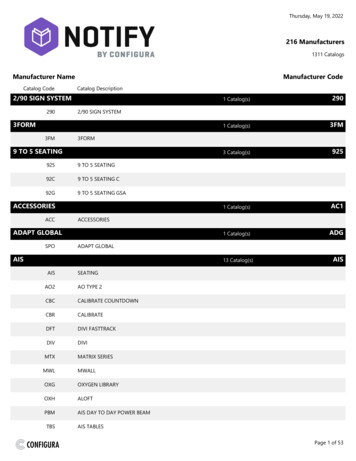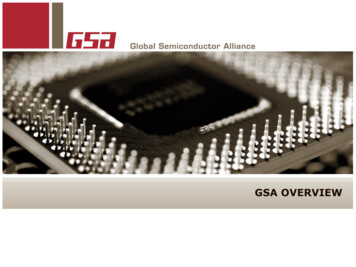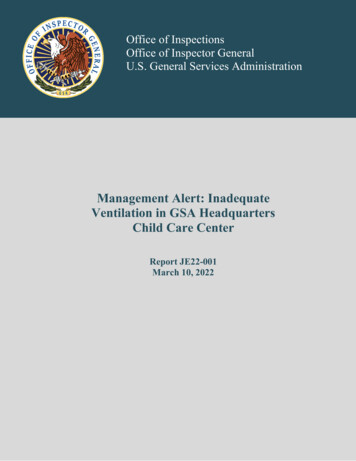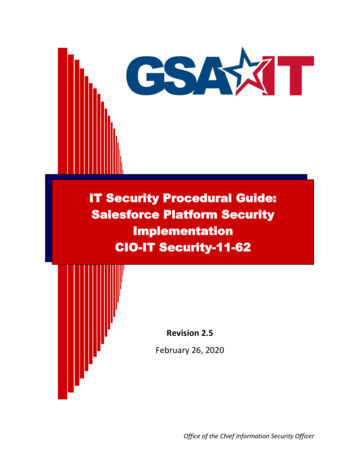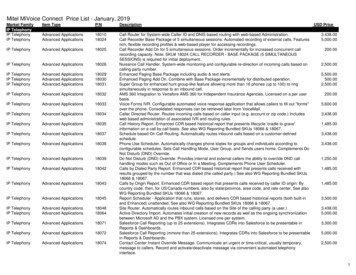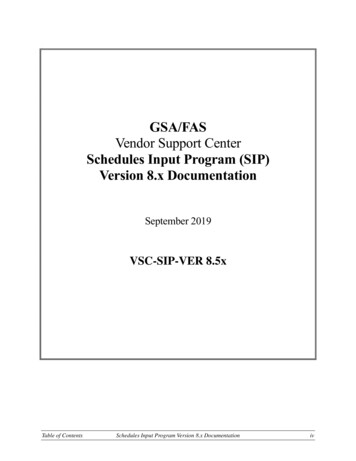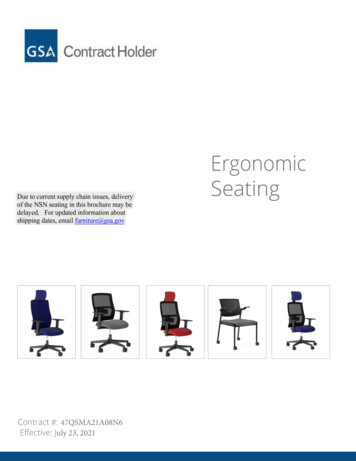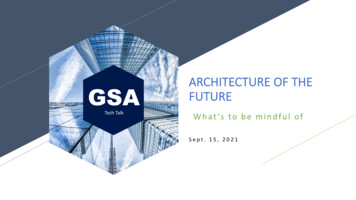
Transcription
GSATech TalkARCHITECTURE OF THEFUTUREW h a t ’s t o b e m i n d f u l o fSept. 15, 2021
Edward MeymanS r. I T L e a d e r & S t r a t e g i s t IT modernization and paradigmshifting Implemented enterprise and interagency programs: Analytics/DataManagement, SOA, BPM/BPR, CaseManagement, Portals Program Management &organizational capability development2
Agenda From CI/CD Pipelines to Supply Chain Management Composable Architecture Some thoughts on AI Underlying Architectural Principles Acquisitions Project Management
From CI/CD pipelines to Supply Chain RiskManagement DevOps Pipelines are beginning to be viewed as Supply Chains Supply chain management is the management of the flow of goodsand services and includes all processes that transform raw materialsinto final products. It involves the active streamlining of a business'ssupply-side activities to maximize customer value and gain acompetitive advantage in the marketplace. (source: Investopedia) Current primary focus – security (perhaps the most concrete andreadily tangible area – consequences immediately obvious) Other significant Supply Chain elements to follow
Example: Gartner’s Software Supply Chain SecurityRisk mitigation framework
Composable Architecture Need to respond and adapt more rapidly to changing business needsand their growing complexity More contextualized experience From IT Roadmap to Capability Management Capability – a meaningful strategic building block of enterprise ITarchitecture and an entity of IT Portfolio Anatomically heterogeneous but functioning as a single unit; Plugand-play principle
Beyond integration Assembling “pieces” of major enterprise platforms into meaningfulcomponents API strategy & governance Containerization strategy Multi-tenancy strategy & governance Enterprise taxonomy & ontology - revived
Some thoughts on AI Combining analytical and empirical approaches through ML-drivenaugmentation Lack of dynamic augmentation lack of intelligence Current approaches appear to be excessively statistical Causality analysis AI strategy should account for NLP use cases ML-driven Abstract Meaning Representation (AMR)
Underlying Architectural Principles Plug and play; Technological Agnosticism Service- and Component-based Architecture; Common Building Blocks Service à CBB à Capability Multi-Tenancy at Infrastructural and Architectural levels Combining standardization/central orchestration with tenant-basedflexibility Deep Analytics Contextual, JIT transaction rendering Open Standards Data/Information security at multiple levels
High-quality, best-value based acquisitions areimperative Best value must be defined and made measurable Ammunition to justify award decisions PWS’ and evaluation criteria must have enough specificity to tangiblyand objectively differentiate the offerors Estimated long-term costs and total cost of ownership must factor in “Try/verify before you buy”
Try before you buy (example)
From Project Management – to ProductManagement Multi-dimensional Product Roadmap as opposed to flat MS Projectschedule Representations: Feature-based Iteration-based Selecting optimal methodology
GSATech TalkThank You.Edward .linkedin.com/in/meyman/
Composable Architecture Need to respond and adapt more rapidly to changing business needs and their growing complexity More contextualized experience From IT Roadmap to Capability Management Capability-a meaningful strategic building block of enterprise IT architecture and an entity of IT Portfolio
